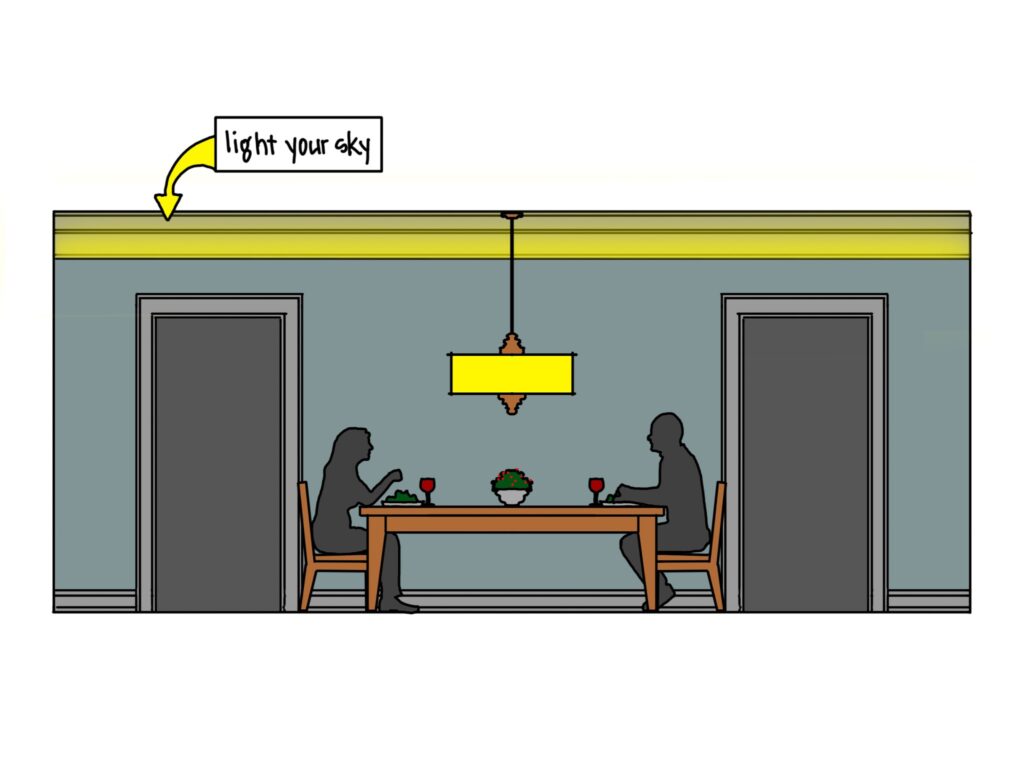This post brings dining rooms into my 1THING: New Build series, but you’ll have to skip ahead or slog through some early morning musings to get there. Sorry.
Blogging is a bit of weird phenomenon. Here I sit, week after week, writing about lighting with no deadlines, no paycheck, and no guarantee that what I write will be read by even a single person. This might make you question my sanity, or at least ask two questions: why do I blog – and will I ever run out of things to say?
The first question is easier to answer than the second. I blog for two reasons: because I want to help and because I become a better designer through the creative exercise. If a single person reads a post and gets better lighting in their life then I consider the blog a raging success. If no one reads the blog, however, I still get a place to explore ideas, concepts, analogies. And I get to doodle and draw, which is just plain fun.
The second question gets at a core fear of my blogging mind: will I become one of those bloggers that says the same thing, over and over, constantly rewriting the same articles?
Possibly. Preparing today’s post on dining rooms brought about a rather strong feeling of deja vu. Haven’t I said this all before? Well, yes, but using different words and sentences. The question is “what is the one thing I would recommend for lighting a dining room if an electrician was involved?”
How about giving your dining room a lighting hug?
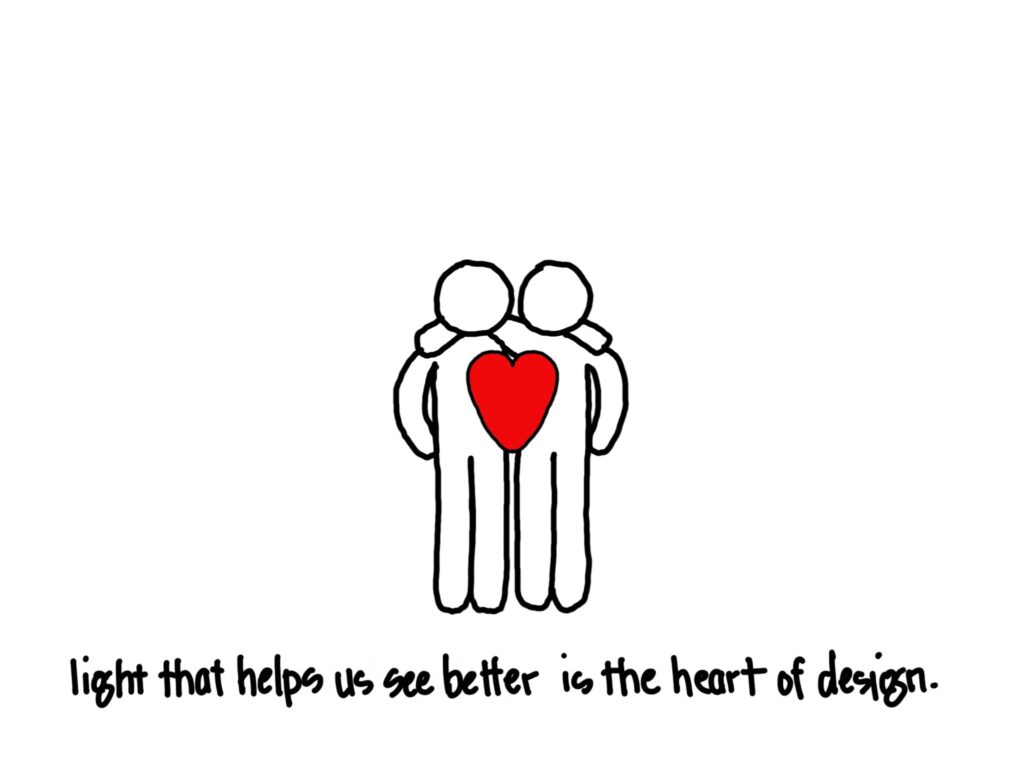
Okay, before I get to the lighting hug, let’s talk about the heart of lighting design. Light can help us see better is the absolute minimum of decent lighting. I often break this into components, or promises, like “light can help you see what you are doing so you can do it better” and “light can help you know where you are, where you are going, and who is with you.”
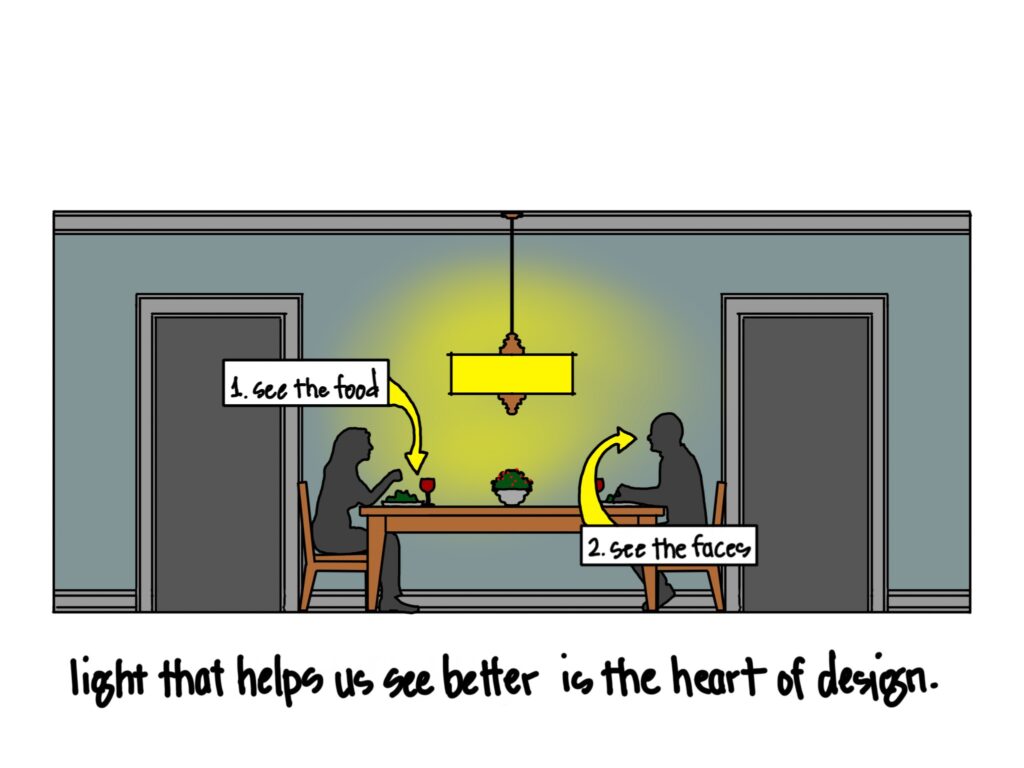
In a dining room, light that helps us see better needs to do two things: see the food so we can eat it and see the faces of others so we can enjoy their company. That means that strong light on the table and soft light on faces is the most important layer of light in a dining room, and that choosing a chandelier or pendant takes a little thought if you want to tackle both.
Since I make the rules, I’m going to assume that you already have a chandelier or pendant over your dining table. What is the 1THING I would do in addition to the chandelier? Give the room a lighting hug.
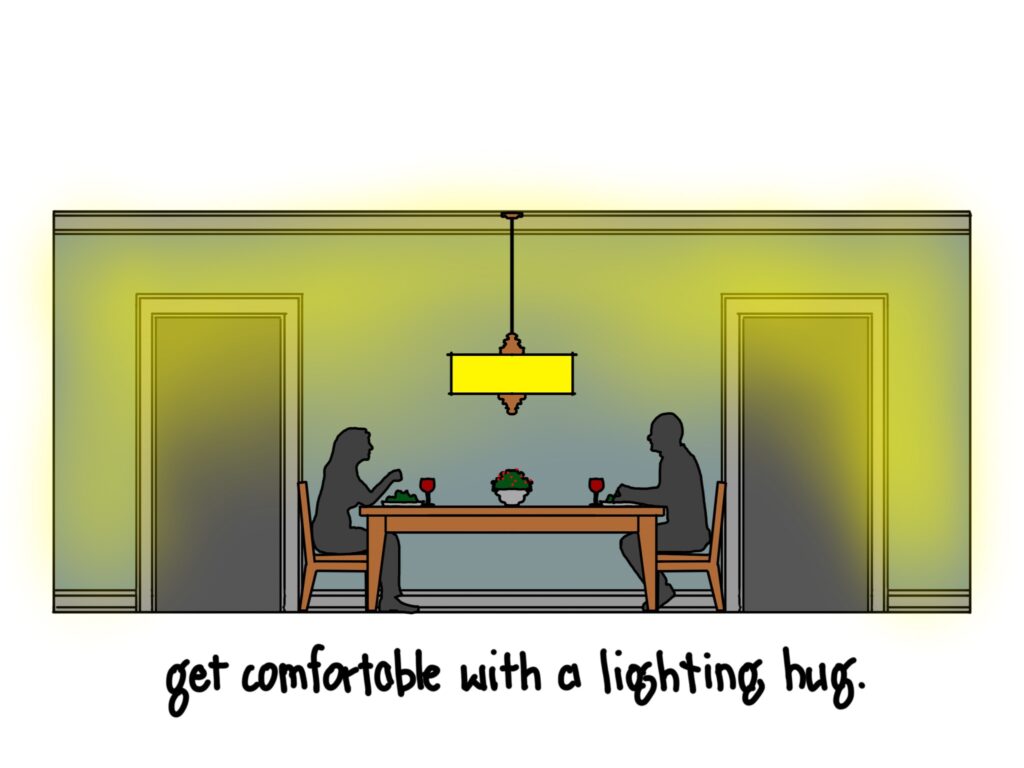
A lighting hug is a phrase I blurted out while on camera with Lee Travis of Wipliance a few months ago. Lee asked me for the basic idea of good landscape lighting and the words just tumbled out. It sounded a little cheesy to me, but a few months later I continue to mull it over.
What is a hug? It is, technically speaking, someone else wrapping their arms around you. But a hug is more than a squeeze. It is a gift of warmth, of care, of concern, even love. A hug speaks to our bodies and souls, comforts us, and helps us relax. I recently visited my parents, of whom I have seen precious little during the pandemic. Their hugs were better than ever.
A lighting hug will not replace a hug from a loved one, but it can help you feel a little more comfortable, a little more relaxed. There is serious research behind the ideas here, but simply put, a lighting hug is light around you. I might call it “light for feeling better” in another post, but the idea is the same. Chase a few of the shadows away and put light beyond the table.
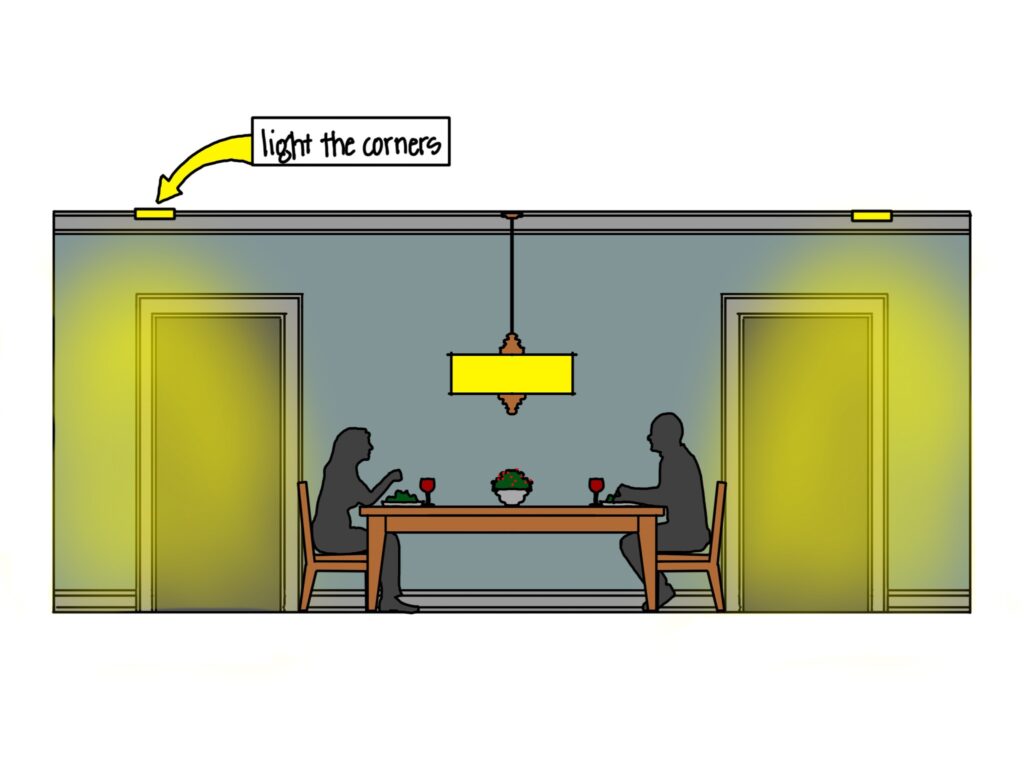
Practically speaking, a lighting hug is light on the walls or vertical surfaces of a space. During the day, we get natural hugs from any space with a window. At night, however, the single light above the table will struggle to replace what we lose when the sun goes down.
Early in my career I had a habit of putting recessed downlights in the corners of the room. These lights chase away shadows and make a hug around the dining table, as seen in the photo of my parent’s dining room in this post. This is still a solid approach for those who insist on strict symmetry in ceiling geometry and I do return to it occasionally. But now that I have advanced beyond ceiling geometry to preference human biology and psychology, I trend to other solutions.
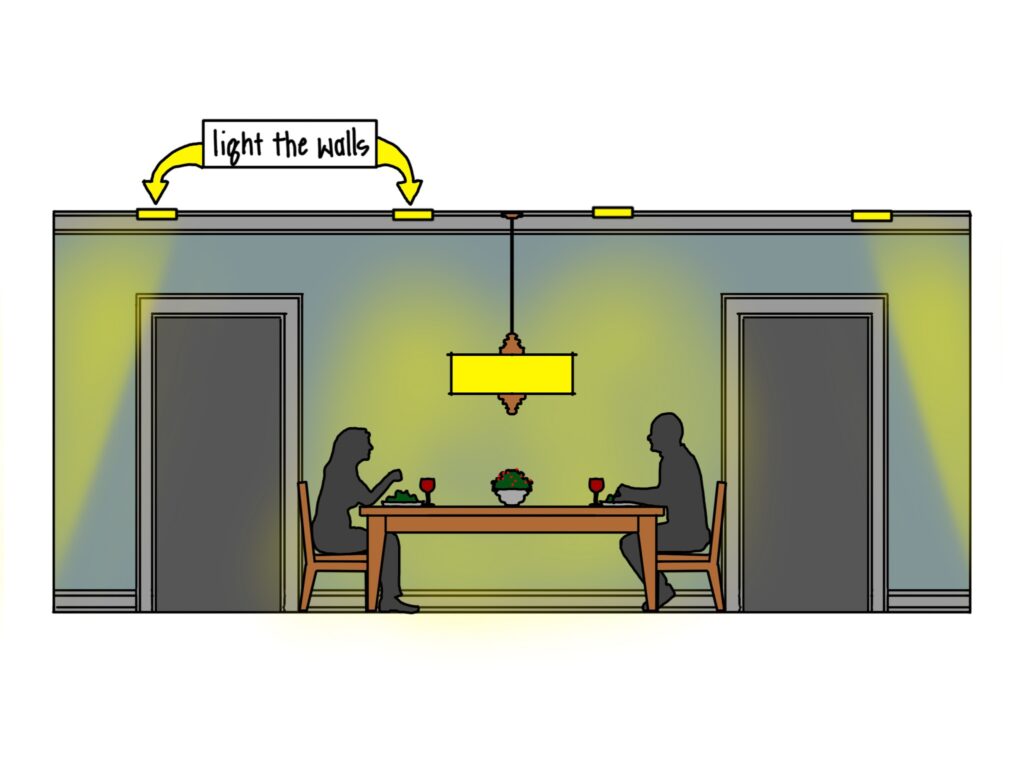
My default these days is to put light on the walls- or anything on the walls like art, textures, and wall coverings. I use recessed adjustable downlights so I can tilt them to highlight a painting and reflect light gently back into the room. These are centered on walls and vertical surfaces (like the faces of cabinetry) to put the light in the right place for a comforting hug. It might not make your food taste better, but it will help you feel better while you sit at the table. And that’s one thing you can do to live a better life.
As a blogger, I can keep recycling the same ideas to infinity, because each time I see the problem from a different angle. I have changed, grown, learned since I last wrote about the subject. I can return to a subject and see the same topic in, well, a new light.
And, if I’m lucky, someone will read it and live a better life as a result.
And one more thing…
Got a bigger budget, or a desire for a deeper hug, the kind you might call a bear hug? Try adding a simple cove around the space to light your ceiling softly. Robert Soler calls it “lighting your sky,” and, well, that may be the simplest way to describe the approach. Bounce light off the ceiling and complete the hug.
